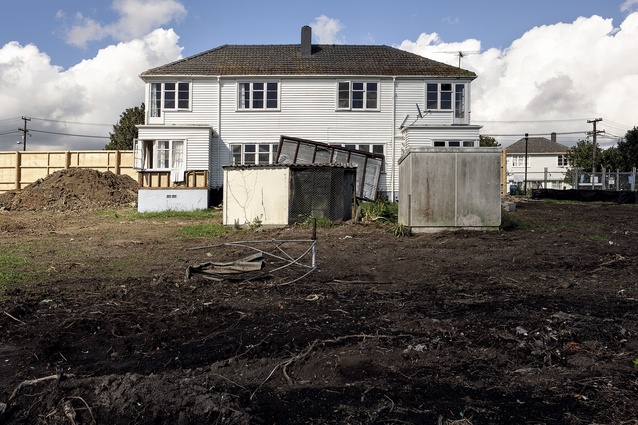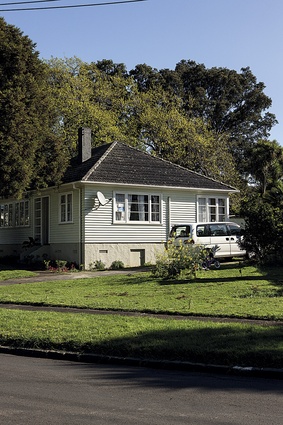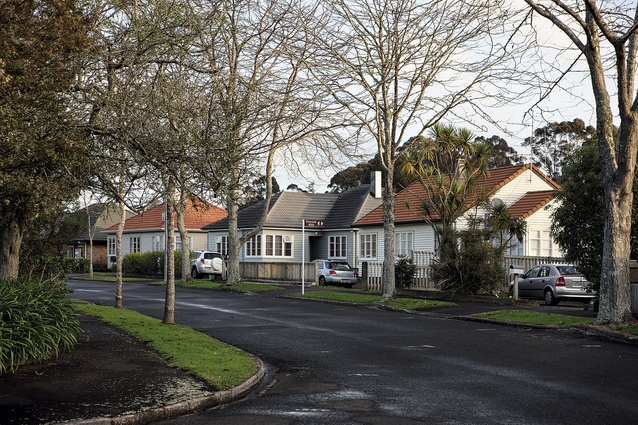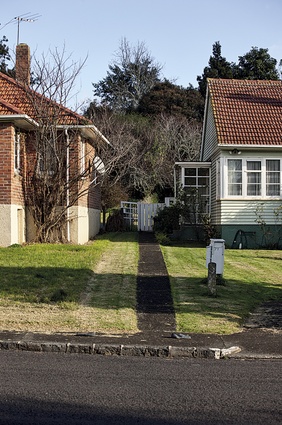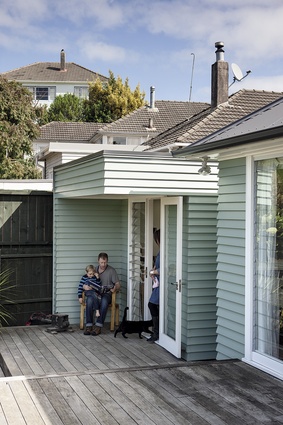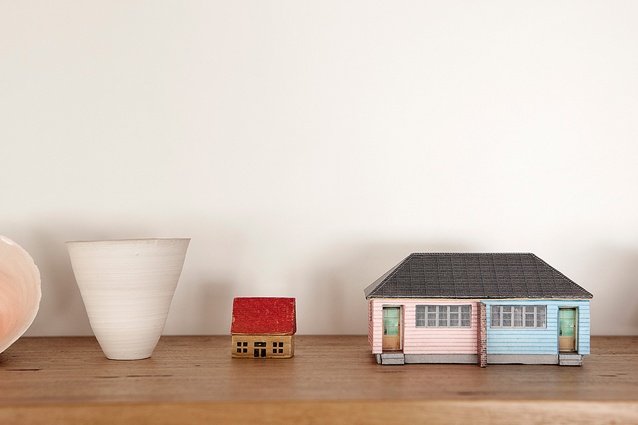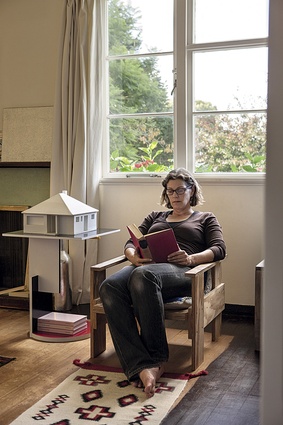A fresh look at the state house
Housing is in the news again, and not just the leaky or the munted stuff. There is a general election coming next year and, for once, the two main parties are giving social housing some attention, producing policy left, right and centre. And indeed, as we all know, one leader was raised in a state house; he was a state house kid made good (or, more accurately, rich and powerful) but did you know that the other spent a year at architecture school? So both, it seems, have personal interests in the subject.
Last year saw the 75th anniversary of the first of the First Labour Government’s state houses and, while I don’t remember much of a party, those state houses are not just icons of Kiwiana but make up a significant aspect of our architectural history. However, although there are a few books on them, these generally look at state houses from a policy or social history viewpoint, rather than consider them from the architectural perspective.
And there is quite a lot to say and several myths to explode.
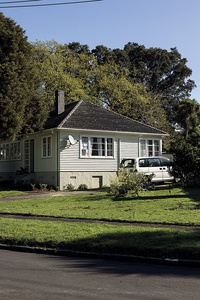
These weren’t the first state or government houses, of course. Our tradition goes back to Seddon’s ‘social laboratory’ and Liberal Government that, in 1905, developed a number of houses for workers. We were also a young and developing country, hence the strong involvement of government in establishing new areas of settlement, new industries and new infrastructure. We also had the space to spread out and, allied to this, was the notion of the Garden City and the suburb as an alternative to inner-city row housing. Other arms of government established housing for the workers in their departments, Maori Affairs produced housing post-war, and the State Advances Corporation was involved in mortgages for the middle class but would approve only a limited number of plans. And because so many builders and designers were involved in state house design, the plans, forms and features of these houses worked their way into the vernacular. Consequently, many people these days may think they live in old state houses but often they just look as though that is what they are. However, the numbers of ‘official’ state houses built by the First Labour Government were still vast.
So who designed these houses? There is a perception that the Housing Division of the Ministry of Works produced many of the plans. You will also read that the NZIA was involved. Little of that is correct. The architects of the Division were involved at town-planning level, creating a number of geometric layouts in the early days but what will surprise many is the level of involvement of James Fletcher in both the instigation of the state house programme and the design of the individual houses. There is also a myth that Fletcher made a fortune here – far from it.
The prevailing state house style originated again from Garden City planning with the houses generally adopting an appearance derived from the English Cottage style and you can even spot a bit of the Georgian in some porches. That they eschewed a more-modern style surprised even The Dominion newspaper, which commented in 1937 that “in none is the exterior design in the trend of modern domestic architecture overseas”. But the reasons for this were both pragmatic and political and not least related to class aspirations. Where modernism did have an outing was in a range of medium-density housing, such as duplexes, but especially in the multi-storeyed apartment blocks of the ’40s and ’50s in Auckland and Wellington and the three-storeyed Star Flats of the 1950s. All were designed by architects of the Housing Division and many by emigré modernists. However, as state house construction really accelerated, we start to see even the Garden City planning evaporate and the appearance of more American-style tracts, resulting in the pattern so familiar today, of curvilinear streets and cul-de-sacs more suited to cars than to buses or trams. Even the NZIA Journal at the time saluted the state house programme as worthy but disappointing. Another great New Zealand lost opportunity.
It is not surprising then that, in the 1949 Ministry of Works publication State Housing in New Zealand , author Cedric Firth focuses not so much on the design of the state houses as on the range and scale of the programme and its role in nation-building. Indeed, the houses themselves are reduced to elements of infrastructure in this startling paragraph: “In these days…
the house is a kind of knot in a network of pipes, wires, roads and footpaths, with larger and more complicated knots for shopping centres and other community facilities…”
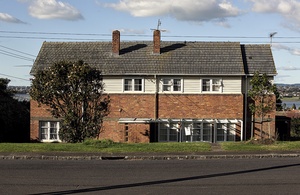
Mention of community raises another important point: the extent to which these new swathes of housing had hearts. Government and its architects were also committed to the new concept of community centres, and many of the larger schemes had community facilities incorporating shops, cinemas, gymnasiums and halls designed into them. The famous Austrian emigré Ernst Plishcke designed a number of very ambitious and remarkably modernist ones, but eventually became disillusioned with progress and resigned over the matter. Many smaller areas of housing had short rows of shops and, whereas these are architecturally fairly ordinary, they did include a few radical social arrangements, such as cooperatives where local people could buy shares in their local shops. The Government remained so keen on community centres that it later instituted a War Memorial Community Centre scheme, in which communities nationwide were encouraged through a pound-for-pound subsidy to erect community centres as war memorials instead of obelisks, statues, arches and so on. This is a little-known but significant programme of construction that resulted in over 350 halls being altered or constructed, including innovative architecture such as the Whanganui War Memorial Hall and John Scott’s Maori Battalion Memorial in Palmerston North.
So what do we make of the state houses today from an architectural perspective? Although not as innovative as they could have been, they did raise the standards of social housing. To avoid a mass-housing appearance, they were differentiated in appearance, in elevation anyway, and used a variety of materials (there are even some stone ones in Oamaru) but there is little regional or climatic variation. They were planned so that they were as much as possible oriented to the sun, exploited views and didn’t overlook each other, but this was often difficult; although early schemes filled in vacant areas of towns, later ones literally broke new ground, crawling up shadowed valleys and perching on exposed hillsides. There were no decks or verandahs: just porches front and back. Sheds and fences were often provided at the back to promote gardening and so on but fences were discouraged at the front to maintain the Garden City ambience and reduce clutter.
The ablutions, laundry, storage and kitchen were improvements, although the planning does mark a significant shift in family life with the kitchen more efficiently laid out but now smaller: no longer the heart of family life but the domain of the domestic sciences and “regarded by planners not as an eating place but as a workroom”. There was considerable debate among tenants and architects as to the relative merits of the big working-class kitchen versus the classier but unfamiliar dining area in the living room. Also, the average family size seemed to settle on four with the three-bedroomed house standard but there was a wide range of alternatives.
State houses were also well built and today many people are still keen to buy ‘ex-stateys’ because of this but, also, not least, because they are in city suburbs that are becoming gentrified. As architects, most of us have done the odd state house alteration and they can be difficult to work with. By modern standards they are small and tightly planned, and the high windows and low eaves can make additions difficult. They are also well off the ground so achieving the indoor-outdoor flow requires additional work.
There are many other aspects of the state house that we could consider and the time is ripe for a book looking at state houses from a more architectural perspective. But the story of social housing in New Zealand is certainly far from over.
Bill McKay, Andrea Stevens and Simon Devitt are producing a book on state houses to be published by Penguin next year. If you have an interesting state house alteration or addition that you would like to see published, please contact Bill McKay at The University of Auckland: b.mckay@auckland.ac.nz

